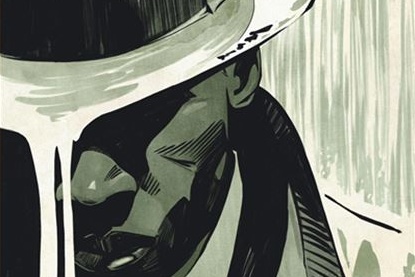All the good things we thought about the first volume of the Harlem diptych, by Quebec cartoonist of French origin Mikaël, are confirmed by the album which comes full circle. Once again, the street scenes are eloquent and the characters are very expressive. What’s more noticeable when you look at the bigger picture is the skill of the screenplay, based on the life of Stephanie St. Clair, a female gangster of Caribbean origin who dominated northern Manhattan, holding her own to Jewish and Italian bandits at the beginning of the last century. Mikaël does not claim to tell the whole truth, only the truth, he first seeks to evoke a reality, that of immigrants, of the excluded. Queenie, as Harlem residents called her, worked for her own profit, but also defended her community, particularly helping its women. And beyond the fascination that the character can exert, it is his anchoring in his neighborhood, in an era, in the violence of a city, shown and also said in a way that could shock some ears, which makes that the work stands out.
Chris Oliveros, founder of the Drawn bookstore and editions
Charles Berberian (Monsieur Jean, with Philippe Dupuy) follows in his own footsteps during a stay in Beirut, Lebanon, where he spent part of his childhood. “Going back through memories or streets is the same movement. The network of a city map or the labyrinth of memory, it’s the same game of interweaving,” he writes in this album, both strange and fascinating, that he made during the pandemic. We immediately recognize his touch in these anything but uniform pages where he constantly moves from the past to the present, recounting his multiple roots as well as the complex country that is Lebanon. Sometimes amazed, sometimes nostalgic, his gaze judges little and says a lot. His beautiful journey to the land of childhood also tells of a mistreated country, as always on the verge of explosion.
The fanciful magician of Figueres is the subject of a colorful comic book biography, but surprisingly classic in its form by Julie Birmant and Clément Oubrerie, a tandem which has devoted a series of albums to Picasso. Here we find Salvador Dalí young, already extraterrestrial, still living with his parents who were desperate by his extravagances. He will gradually find his way by crossing that of Buñuel and García Lorca, until leaving for Paris. The portrait is eloquent and entertaining, but it is the imagery that catches the eye, with its palette of warm colors and a staging that here and there dares to set foot in oneirism, a space that it will explore and mix with his fantasies in his art, as we know. This return to basics is interesting, but we are waiting for the sequel, hopefully more explosive.
Umberto Eco had phenomenal success with The Name of the Rose, a scholarly crime thriller adapted for the cinema a long time ago with Sean Connery and Christian Slater in the lead roles. Milo Manara, of course known for his erotic comics, dares to transpose them over several volumes. His suave style contrasts with the dark images we kept in mind – those of the film, of course, but also those generated by the abundant novel by the eminent Italian semiologist – and dilutes the drama told. Manara writes beautiful pages when he evokes the sulphurous ancient illuminations and maintains the necessary restraint when he shows the excesses of zeal of the Inquisition (and its torture specialists), but we do not feel it truly at home when the young monk comes across a pretty young girl in the middle of the night… The scene being, as one might suspect, more in his palette. This is only the first volume, the sequel will perhaps prove more convincing.
There are several stories of Holocaust survivors in comics, starting with the essential and extraordinary Maus by the American Art Spiegelman. Adieu Birkenau is inspired by the life of Ginette Kolinka, a “transmitter of memories of the Shoah” also known in France as the mother of Richard Kolinka, drummer of the rock group Telephone. Let’s say it straight away: you shouldn’t be too careful about the drawing which, here, is very generic and only surprises by its way of evoking the ghosts of Auschwitz and Birkenau. The story, however, turns out to be touching in the way it shows the heavy weight carried by Ginette Kolinka throughout her life and her brutal honesty. She recounts her suffering and that of others, but also says without hiding it that in the camps, it was everyone for themselves, and admits not knowing if she too could have fallen into cruelty towards her fellow human beings if had been necessary to save his skin. Stirring.





